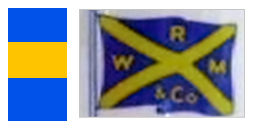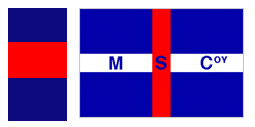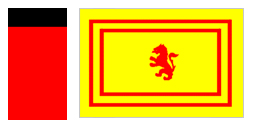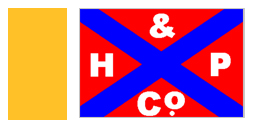RW Miller & Company Limited
 Known as bulk carriers since 1912, and in particular as coal merchants on the New South Wales coast, “Millers” had three ships when the Second World War started:
Known as bulk carriers since 1912, and in particular as coal merchants on the New South Wales coast, “Millers” had three ships when the Second World War started:
Ship |
Built |
Gross Tons |
In Service |
| Canopus | 1912 | 1337 | 1940-1960 |
| William Macarthur | 1924 | 2393 | 1924-1960 |
| Birchgrove Park | 1925 | 640 | 1930-1956 |
Bulk carriers of cargoes were in great national need, however Birchgrove Park was requisitioned in 1941, first commissioned as a minesweeper then to transport supplies and personnel, and was handed back to owners in 1946.
Read moreDate posted: 2014-04-01 | Comments(0)
Melbourne Steamship Limited
 In 1895, this became the name of the former Melbourne Coal Shipping & Engineering Company Limited, having over several earlier decades managed several shipping groups. “Melbourne Steam” by the late 1930s was operating on the eastern, southern and western coasts of Australia.
The start of the Second World War saw the company with five ships:
In 1895, this became the name of the former Melbourne Coal Shipping & Engineering Company Limited, having over several earlier decades managed several shipping groups. “Melbourne Steam” by the late 1930s was operating on the eastern, southern and western coasts of Australia.
The start of the Second World War saw the company with five ships:
Ship |
Built |
Gross Tons |
In Service |
| Coolana | 1921 | 2197 | |
| Duntroon | 1935 | 10514 | |
| Ellaroo | 1921 | 4655 | |
| Lowana | 1924 | 3031 | |
| Mernoo | 1926 | 1926 |
Coolana was shelled by an enemy submarine off Cape Howe on 7 August 1942 but escaped. Duntroon was taken up under requisition in October 1939 with the intention of its conversion to an Armed Merchant Cruiser but this did not go ahead. Requisitioned again in February 1942 she commenced duty as a troopship and continued transporting personnel, including at war’s end, returning prisoners-of-war in late 1945. She later served on charter to the Royal Australian Navy.
Read moreDate posted: 2014-04-01 | Comments(0)
McIlwraith McEacharn Limited
 “McIlwraiths” (also known as the Scottish company) was formed in 1875, initially for Australia/Pacific – United Kingdom trade, especially in frozen meat. Early in the 20th Century it commenced Australian coastal trading.
“McIlwraiths” (also known as the Scottish company) was formed in 1875, initially for Australia/Pacific – United Kingdom trade, especially in frozen meat. Early in the 20th Century it commenced Australian coastal trading.
During the Great War, its ship Karoola ( 7391 gt) was requisitioned in 1915 for hospital ship duties, although for her first year she served as a troopship, designated A63. Katoomba served under requisition as a troopship and returnee prisoner-of-war carrier from May 1918 to September 1919.
At the outbreak of the Second World War the company’s fleet comprised ten ships, all operating on the Australian coast:
Ship |
Built |
Gross Tons |
In Service |
| Kooyong | 1907 | 2296 | 1907-1946 |
| Koonda | 1910 | 1831 | 1910-1946 |
| Katoomba | 1913 | 8424 | 1913-1946 |
| Kooliga | 1928 | 2495 | 1928-1953 |
| Koomilya | 1929 | 2780 | 1929-1955 |
| Hetton Bank | 1924 | 1375 | 1934-1961 |
| Pelton Bank | 1924 | 1371 | 1934-1968 |
| Kanimbla | 1936 | 10985 | 1936-1961 |
| Mortlake Bank | 1924 | 1375 | 1937-1968 |
| Kooringa | 1938 | 3292 | 1938-1958 |
Requisitioned in August 1939, Kanimbla was first converted to the role of Armed Merchant Cruise, re-converted in April 1943 as a Landing Ship, Infantry and later operated as a troopship carrying personnel, ultimately back to Australia, including released prisoners-of war. Katoomba, despite crossing paths with and being fired upon by a submarine in August 1942, was able to see out its service until 1946.
Read moreDate posted: 2014-04-01 | Comments(0)
Illawarra & South Coast Steam Navigation Company
 A long-time operator of intra-state ships, its forbears dating back to 1839, particularly along the New South Wales south coast, “Illawarra Steam” served numerous communities unreached by rail.
A long-time operator of intra-state ships, its forbears dating back to 1839, particularly along the New South Wales south coast, “Illawarra Steam” served numerous communities unreached by rail.
The company started the Second World War with five ships:
Ship |
Built |
Gross Tons |
In Service |
| Bermagui | 1912 | 402 | 1912-1952 |
| Narani | 1914 | 381 | 1914-1950 |
| Bergalia | 1925 | 548 | 1925-1953 |
| Cobargo | 1929 | 860 | 1929-1953 |
| Kianga | 1921 | 338 | 1933-1948 |
Three ships became “H.M.A.S’s” as minesweepers: Bermagui 1939-1946, Narani June1940-1945 and Kianga September 1940-1946. Cobargo preceded by about three hours the Japanese midget submarines entering Sydney Harbour in search of ship targets on the night of 31 May 1942.
Read moreDate posted: 2014-04-01 | Comments(0)
Huddart Parker Limited
 “Huddart Parker’s” corporate life began in 1876 following more than two decades of trading activities by its founders. Incorporation as a public company was in Melbourne in 1912. A number of its vessels went under requisition during the Great War: Nairana as a seaplane carrier, Zealandia and Ulimaroa as troopships, Hebburn as a stores vessel, Coogee as a minesweeper. Wimmera was lost to a mine between Auckland and Sydney in 1918, with twenty-six of its crew. Zealandia carried ANZACs’ (newly acquired) families from Engalnd to Australia from late 1918 to early 1919.
“Huddart Parker’s” corporate life began in 1876 following more than two decades of trading activities by its founders. Incorporation as a public company was in Melbourne in 1912. A number of its vessels went under requisition during the Great War: Nairana as a seaplane carrier, Zealandia and Ulimaroa as troopships, Hebburn as a stores vessel, Coogee as a minesweeper. Wimmera was lost to a mine between Auckland and Sydney in 1918, with twenty-six of its crew. Zealandia carried ANZACs’ (newly acquired) families from Engalnd to Australia from late 1918 to early 1919.
Twenty years on, the Second World War commenced with Huddart Parker’s ocean-going fleet comprising nine ships: All participated directly in support of the deployed armed services.
Ship |
Built |
Gross Tons |
In Service |
| Yarra | 1907 | 2140 | 1907-1946 |
| Zealandia | 1910 | 6660 | 1910-1942 |
| Goulburn | 1915 | 2363 | 1915-1955 |
| Corio | 1919 | 3346 | 1926-1951 |
| Colac | 1920 | 3341 | 1926-1952 |
| Westralia | 1929 | 8108 | 1929-1960 |
| Wanganella | 1929 | 9360 | 1932-1961 |
| Adelong | 1935 | 3577 | 1935-1967 |
| Barwon | 1939 | 4239 | 1939-1969 |
Zealandia, already a veteran, was in June 1940 requisitioned for trooping and re-supply duties but on 19 February 1942 was lost to Japanese bombing in Darwin. Westralia’s requisition occurred in November 1939 with conversion to an Armed Merchant Cruiser, later to a Landing Ship, Infantry and later still as a troopship. Wanganella was requisitioned as a Hospital Ship in May 1941 and at war’s end brought released prisoners-of-war back to Australia prior to return to owners late in 1946. Barwon survived a submarine attack (first thought to have been shelling) off Gabo Island on 4 June 1942.
Read moreDate posted: 2014-04-01 | Comments(0)